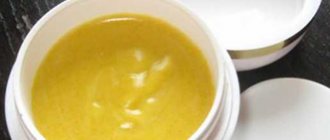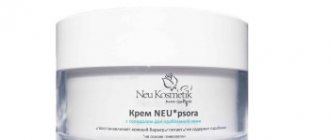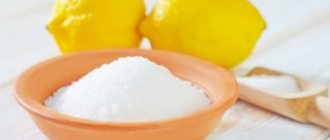The name “solidol” is actually an informal synonym for any grease. From a technical standard point of view, this is not the case. GOST 1033-79 gives an unambiguous description of this product, and its composition differs from most analogues. We will talk about a common type of this substance, which is called “Solidol - Zh”.
Scope of application – general purpose lubricant, without narrow specialization. The composition of solid oil is quite complex: traditionally it is a whole bunch of petroleum oils (viscous compositions are initially selected).
Soaking with calcium fatty acids is used as a thickener (we are talking about grease). Moreover, exclusively natural ingredients are used: plant or animal origin. The outdated name for grease is grease.
Solid oil - description, characteristics and applicability.
Solidol is one of the first greases developed in the 20s of the 20th century for servicing components of automotive and agricultural equipment.
Solid oil
(from Latin solidus - dense and oleum - oil), outdated designations “grease”, “madia”, “oil ointment”, this is a plastic lubricant obtained by thickening industrial oils of medium viscosity with calcium soaps of higher fatty acids.
wholesale department - contacts
wholesale department contacts for communication
purchase of used oil
purchase of used kerosene
Operating temperature up to 65…70 °C. Compared to lithium greases, it is more difficult to wash out with water.
Solid oil is used in mechanisms that operate in damp conditions (agricultural machinery, etc.), but do not experience heating, and also as a conservation lubricant.
The composition of grease is a homogeneous composition from light yellow to dark brown, which is obtained by thickening industrial oils with calcium soaps. The upper threshold of operating temperatures is about +70 °C.
Solid oils are used not only for lubricating machines and mechanisms, but also for medicinal purposes. In gardening, the positive practice of using solid oil “in its pure form” instead of garden varnish when grafting and pruning trees is known.
There are two main types of solid oils:
- Fatty greases, where fatty acids of plant origin are used as a thickener,
- Synthetic solid oils, where the thickener is obtained by chemical synthesis.
Solid oils are divided into two main groups:
- Fatty
solid oils, where hydrated calcium soaps are used to thicken the base oil, obtained by saponification of fatty acids and their glycerides that are part of vegetable oils with slaked lime. - Synthetic
solid oils, where hydrated calcium soaps of synthetic fatty acids, obtained by catalytic oxidation of high-molecular hydrocarbons (paraffins, etc.) with atmospheric oxygen, are used to thicken the base oil.
Which one to use - technical or medical solid oil?
If the task is to cure a skin disease that significantly reduces the patient’s quality of life, then, of course, it is necessary to use medical solidol, available without a prescription in retail pharmacy chains.
Technical solid oil is similar in its therapeutic properties to medical products of the same type, but still it is not sufficiently purified and contains a large number of chemical impurities, alkali, calcium salts, caustic soda and other substances not needed by the human body. The main purpose of technical grease is to lubricate mechanical structures and parts subject to active friction in order to reduce metal wear and continue the service of the mechanism.
Medical solid oil is produced for only one purpose - to provide assistance to a person suffering from a dermatological disease.
Synthetic solid oil - production.
Synthetic solid oil was produced on the basis of acid-contact and selectively refined oils, and the share of the latter in the mixture, according to standards, did not exceed 30%. Bottom residues from the distillation of synthetic fatty acids (9-12%), which were saponified with lime, are used as raw materials for the preparation of the thickener.
Fatty solid oil is thickened with calcium soaps of fatty acids contained in natural fats (usually cottonseed oil).
To prepare synthetic solid oil, a suspension of lime milk is prepared in a digester in a small amount of ready-made solid oil at a temperature of about 100 °C. Then the temperature drops to 65 ° C and the mixture settles, the water released is drained, and in return, a small (about 15% of the norm) amount of mineral oil and the entire required amount of fatty acids are loaded into the boiler.
The next stage in the preparation of synthetic solid oil is the saponification of acids and partial dehydration of the resulting soap by heating the mixture to 105 °C for 2...6 hours. The rest of the oil is added to the mixture, which reduces its temperature to 70...75 °C. After mixing and cooling, the finished solid oil is poured into containers. At modernly equipped enterprises, the cooking of solid oils was carried out under pressure in hermetically sealed autoclaves with mechanical mixing devices, which accelerated the process of preparing the lubricant and increased productivity, and refrigerating drums were used to cool it.
Both types of grease are prepared from mineral (petroleum) oil; the names reflect the method of obtaining the soap thickener used.
Fatty solid oils were considered to be of higher quality, in particular, they were less prone to hardening during storage and to thixotropic hardening during “rest” after injection into the unit under pressure. Externally, fatty solids are indistinguishable and mix without negative consequences.
Based on their consistency, they also distinguish between regular and press grease.
Press greases are used to lubricate mechanisms through grease fittings (injection), they are softer in consistency, but have a lower upper temperature threshold and decompose already at 80 °C (they begin to leak and lose their lubricating properties at 45...50 °C) .
Solid oils include USsA graphite lubricant, which has a silver tint. Its composition includes up to 10% ground graphite-P (coarse), this gives the USsA graphite lubricant increased extreme pressure and conductive properties and.
Solid oils have been used everywhere for many years. Due to their low cost, versatility, good moisture resistance, even today they still find use.
Grease turned out to be so popular that not only mechanics, but also ordinary car enthusiasts began to call any grease for automotive and industrial applications grease.
The main disadvantage of solid oil is the very low threshold for upper operating temperatures. Already at +80 °C the lubricant is destroyed and ceases to perform its protective functions.
purchase of used oil
purchase of used kerosene
How to remove grease from pots. How to clean a pot from grease.
Both of these lubricants are very popular in automotive circles. Wherever they are used, from the lubrication of ball and steering ends, to all kinds of bearings and hinges. But many of us think that this is the same lubricant, that they do not differ at all, and there is no difference! However, this is fundamentally wrong; there are differences, and they are quite critical! Therefore, if you are wondering what to choose, this article is for you...
No, guys, it's not the same thing! Yes, the names are consonant, but there is a big difference between them and, as it becomes clear, it lies in the chemical formula. These differences make these substances for different types of applications, and this is really worth knowing so as not to harm your “iron horse”. Let's look at what in more detail
Litol - description, characteristics and applicability.
Litol grease was developed in the Soviet Union in the 70-80s of the 20th century as a material that, over time, is intended to completely replace grease.
Mineral oil thickened with lithium soaps of stearic acids is used as a lithol base. This thickener made it possible to expand the range of operating temperatures - the lubricant works perfectly up to +120...+130 °C.
The most famous and versatile material from the series is Litol-24. The additives this composition contains prevent the process of accelerated oxidation of the lubricant. The consistency, load-bearing capacity, water-repellent properties and many other characteristics of the material turned out to be sufficient for its use in most components of modern mechanisms.
Currently, Litol is perhaps the most universal and multifunctional lubricant for mechanisms operating under normal operating conditions.
Advantages and disadvantages
Lubricant is used in various fields, so it would be a good idea to familiarize yourself with its advantages and disadvantages. Especially when you consider that the composition is almost a century old.
| Advantages | Flaws |
| Lack of additives that increase wear resistance of parts. Using the Vulcan mirror, clients can log into their personal account and play their favorite games even when the site is blocked by the provider. The administration constantly distributes up-to-date links, so bypassing the blocking has long ceased to be a worrying problem. The Vulcan casino website https://indiaeducationreview.com and the mirror of the same resource have the same interface. It is quite convenient to use: there is simple navigation, the catalog is divided into sections, you can search for your favorite games using built-in filters. The mirror is also available with a mobile version. As a comparison: the scuffing index of transmission oil TM5-18 is 58, Litola-24 is 28. Low performance under welding loads. The material is flammable, which requires appropriate storage conditions. |
Negative aspects also include the fact that the lubricant retains abrasive particles and poorly removes heat from the rubbing elements of the mechanism. Accordingly, in order to avoid premature wear of parts, lubricant replacement must be carried out exactly according to the established regulations.
Comparison of solid oil and lithol.
So, since the times of the USSR, litol and grease have remained the most popular lubricants in Russia.
What is the difference between these materials? You can understand lubricants, which is better - litol or grease, if you know their composition and the properties that their components give to lubricants.
The main features and differences between the materials are explained by the different type of thickener used.
The increase in the heat resistance of the composition is the merit of lithium soap, used instead of calcium soap in grease. Litol also has higher anti-corrosion properties.
But, if we compare both compositions, calcium solid oil better resists being washed out by water. It is also characterized by less chemical activity and can be used with those structural materials (for example, aluminum and other non-ferrous metals) for which lithium greases are destructive.
One cannot fail to note such a parameter as plasticity. If you squeeze lithol in one hand and solid oil in the other, the first material will be smeared, and the second will be pressed well between your fingers.
Unlike solid oils, lithols do not contain components that are aggressive towards most rubbers. That is why these materials are often used in units in contact with rubber cuffs, oil seals, and seals.
Thus, despite the obvious advantages of lithol in some parameters, the difference in operational properties did not allow lithol to completely replace solid oil. Each of these materials is still in use, each with its own areas of application.
Note that pure calcium lubricants are now rarely used. They were replaced by materials based on complex calcium soaps. The new compositions are free of the disadvantages inherent in lithols and are characterized by very high performance properties.
Areas of application
The difference between ordinary and medical solid oil is only in its purification from impurities and petroleum product residues. Medically used in the treatment of psoriasis. Scientists have proven its effectiveness in this case.
Externally, it is a thick, greasy ointment with a brown tint, which has the following beneficial properties:
- prevents peeling;
- activates cell regeneration;
- heals wounds and ulcers;
- eliminates itching and burning.
After doctors confirmed the healing properties of solid oil, they began to add it to many medications intended for the treatment of psoriasis, eczema and other skin diseases.
Among the most popular and effective means it is worth highlighting:
- "Ungwetol";
- "Magnispor";
- "Antipsor";
- “I. S. Chernyshev’s ointment”;
- "Cytospor";
- "Psorium";
- "Psoril";
- "Psori cream."
And although solid oil has been used for medical purposes in our country for more than 80 years, you should know that it causes allergies in the form of redness and pimples.
Use for psoriasis
The course of treatment of the disease with ointments and grease should not last more than two months. This period is enough to get rid of acute signs of the disease and restore the skin. Kartalin ointment, also known as White Salidol , is widely used in dermatology.
What is better to choose for lubrication - litol or solid oil?
- Solid oil is often used to lubricate hinges and other friction units of outdated equipment that does not experience heavy loads and operates at low speeds.
- Litol can withstand more severe conditions, therefore it is actively used in components of modern technology.
At the same time, restrictions regarding a particular lubricant impose certain limits on its use in certain areas.
For example, lithol is not recommended for use on aluminum surfaces, so if there is an alternative - to use grease or lithium grease there - it is better to choose the first option.
Solid oil is indispensable where good protection from environmental influences is required - moisture, dust, dirt, sun, wind. That is why it is used as a conservation lubricant, as well as for agricultural machinery and road equipment.
In modern automotive technology, the use of grease is undesirable and impractical, and sometimes unacceptable. The use of grease is suitable for use on outdated equipment with large lubrication gaps and lower loads on components and parts.
Solid oil is excellent as a lubricant for conservation, where solid oil is indispensable. Litol is the most universal lubricant for most automotive mechanisms.
wholesale department - contacts
wholesale department contacts for communication
Litol and solid oil, what are their differences
Information from the site – Industrial oils
purchase of used oil
Another area of application is mechanical and power tools.
It is not recommended to use grease in tools with high shaft speeds; we know about problems with overheating. But feed mechanisms for supports of milling and lathes, slow speed gearboxes, various manual (and electric) winches are the best option.
Lubrication works well on conveyor belts, conveyor lines, and hinges of industrial robots. In addition, grease is used to lubricate door and gate hinges and lock mechanisms, especially padlocks that are located on the street.
Classification of lithols
Litol is a water-resistant lubricant based on petroleum oils. The oil is thickened with lithium steorinic acid soap. This thickener gives lithol a high temperature threshold for use and viscosity. It has a color from light beige to chocolate. The lithol production line includes four main branches of material. Among them:
- CIATIM-201
- CIATIM-202
- CIATIM-203
- Litol-24
CIATIM-201 and CIATIM-202 are intended for use in units with moderate load, where there is no increased shear of the material of the protected equipment. These CIATIMs are used in electrical engineering, radio engineering and other high-precision devices. These brands have the highest frost resistance. The temperature range for using lithols of these types is wide and ranges from -50 °C to +100 °C. Brand CIATIM-201 and CIATIM-202, due to the similarity of properties, can be replaced with each other.
CIATIM-203, unlike the two previous lithols, is made from transformer oil, which is also thickened with lithium soap. A number of additives are introduced into this lithol, aimed at imparting additional properties. Thanks to the additives, the scope of application in power units of heavy equipment, gearboxes, loaded bearings and gears is expanding. It differs sharply from the two previous brands in water-repellent properties, surpassing CIATIM-201 and CIATIM-202. Wear protection for mechanism parts has also been improved.
Litol-24 contains all the properties of CIATIMs. In addition, it has additives that prevent oxidation of parts. Use temperatures up to 130 °C allow you to protect components with intense friction in all kinds of bearings. The lithol oil base practically does not evaporate (no more than 5% at maximum operating temperature) - this adds durability to the unit into which the lubricant was added.
Diet
We have already said that solid oil helps get rid of psoriasis quite quickly. But the effect will be much better if you follow a certain diet. If you consult a doctor about this problem, he can prescribe medication and some painless procedures.
Let's pay a little attention to proper nutrition. For psoriasis you should eat:
- vegetables;
- fruits;
- berries;
- greenery;
- dairy products;
- eggs;
- poultry meat;
- fish;
- beef;
- cereals;
- vegetable oils.
Do not use:
- citrus;
- potatoes;
- eggplant;
- tomatoes;
- Bell pepper;
- alcoholic drinks;
- chocolate;
- coffee.
It is also worth saying that you should not smoke. If a person smokes, then it is worth reducing the number of cigarettes smoked per day to a minimum. Follow the rules of the diet, use grease-based ointments, then you will be able to get rid of psoriasis quickly.
Usage
Treatment of skin diseases with grease has become widespread in our country. In folk medicine, there are simply a lot of recipes for ointments based on this substance for the treatment of psoriasis. The most popular and effective of them will be presented below.
Remedy No. 1
We will need:
- honey in the amount of two tablespoons;
- medical grease – 250 grams;
- half a teaspoon of sulfur powder;
- 1 teaspoon rosehip ash;
- one and a half tablespoons of crushed celandine;
- 1 protein;
- a quarter tube of baby cream.
Cooking will not be difficult. All ingredients must be mixed thoroughly. Apply the resulting ointment 2 times a day to diseased areas of the skin. You can use this remedy as long as necessary, that is, until the symptoms disappear.
Remedy No. 2
Ingredients:
- linden honey;
- grease;
- two egg whites.
Mix all the ingredients of the ointment and apply it daily for 2 weeks. Then you need to add dried chopped celandine to this product. After the manipulation, continue treatment for another 2 weeks.
Methods for removing grease stains from clothes
- You can look for special stain removers in stores. Acting according to the attached instructions, we try to achieve a positive result. And don’t forget about safety precautions.
When various chemicals interact, they can ignite spontaneously. Therefore, clothes must be cleaned by taking them off.
- The grease must be removed using a cotton swab dipped in purified gasoline. After this, a greasy stain is guaranteed to remain. It cannot be washed in the usual way. Therefore, we fight it with ammonia, in which we soak cotton swabs and rub the stain. And after that, you can try to wash the stained area with products for difficult to remove stains.
The same method as No. 1, but instead of gasoline we use warm turpentine (it must be heated carefully in a water bath so as not to cause ignition). After removing with turpentine, the stain is also treated with ammonia
And then we try to wash it with special detergents. If you remember the composition of solid oil, then it would be logical to try to remove it with fat. That is, butter or margarine, which should be applied to the stain. And after 30 minutes, wash using regular laundry soap or washing powder. As a stain remover, you can use table vinegar, which you will need several tablespoons per 500 ml of water. With this solution, thoroughly wipe the contaminated areas, and then wash with a product for stubborn stains. Car owners can use car shampoo for this purpose. First you need to apply detergent to the stain, and after half an hour wash the clothes using powder.











